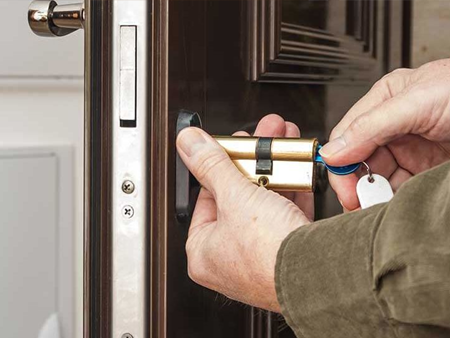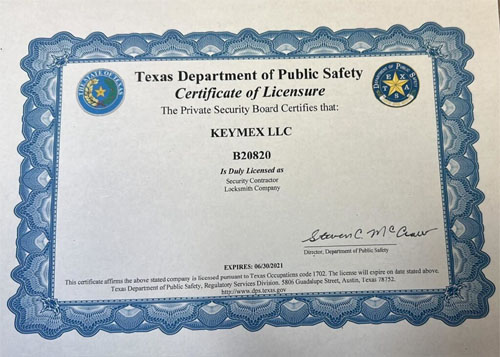Unlocking the Secrets: Understanding Master Key Systems

In the realm of security, master key systems stand as a testament to ingenuity, offering unparalleled convenience and control over access to buildings and facilities. From apartment complexes and office buildings to hotels and educational institutions, master key systems play a pivotal role in streamlining access while maintaining security. But what exactly are master key systems, and how do they work? In this blog, we’ll delve into the intricacies of master key systems, exploring their mechanics, applications, and benefits.
What is a Master Key System?
At its core, a master key system is a sophisticated locking mechanism that allows for multiple levels of access within a single building or complex. Unlike traditional locks, which require separate keys for each door, a master key system employs a hierarchical structure of keys to grant different levels of access to authorized individuals. This hierarchical system consists of three primary types of keys:
 Master Key: The master key sits at the top of the hierarchy, granting access to all locks within the system. It is typically held by a designated authority, such as a building manager or security supervisor, who requires unrestricted access to all areas.
Master Key: The master key sits at the top of the hierarchy, granting access to all locks within the system. It is typically held by a designated authority, such as a building manager or security supervisor, who requires unrestricted access to all areas.- Change Key: Change keys, also known as sub-master keys, are designed to operate specific groups of locks within the system. Each change key is tailored to a predefined set of locks, allowing individuals with the corresponding key to access those areas while remaining restricted from others.
- Standard Key: Standard keys are the most basic level of access within a master key system. Each standard key is uniquely configured to operate a single lock, providing access only to the corresponding door or area.
How Does a Master Key System Work?
 The operation of a master key system relies on the precise alignment of key pins and driver pins within the locks, a principle known as pin tumbler technology. Each lock within the system is equipped with a series of pins that correspond to the cuts on the key. When the correct key is inserted into the lock, the pins align along the shear line, allowing the lock to turn and open.
The operation of a master key system relies on the precise alignment of key pins and driver pins within the locks, a principle known as pin tumbler technology. Each lock within the system is equipped with a series of pins that correspond to the cuts on the key. When the correct key is inserted into the lock, the pins align along the shear line, allowing the lock to turn and open.
In a master key system, the pins within each lock are configured to respond to multiple keys, with each key operating a different set of pins. The master key is designed to override all other keys, allowing it to operate all locks within the system. Change keys are programmed to align with specific combinations of pins, granting access to designated areas while remaining restricted from others.
Applications and Benefits of Master Key Systems
Master key systems find applications across a wide range of industries and sectors, offering unparalleled flexibility and security management. Some common applications include:
 Residential Buildings: Apartment complexes and condominiums use master key systems to provide tenants with individual unit access while enabling property managers to access common areas and maintenance spaces.
Residential Buildings: Apartment complexes and condominiums use master key systems to provide tenants with individual unit access while enabling property managers to access common areas and maintenance spaces.
Commercial Properties: Office buildings, retail establishments, and warehouses utilize master key systems to grant employees access to designated areas based on their roles and responsibilities.- Educational Institutions: Schools, colleges, and universities implement master key systems to regulate access to classrooms, offices, and administrative areas while ensuring security and safety on campus.
- Hospitality Industry: Hotels and resorts utilize master key systems to manage guest room access, enabling staff to access rooms for cleaning and maintenance purposes while maintaining guest privacy and security.
The benefits of master key systems include: - Enhanced Security: Master key systems provide greater control over access, reducing the risk of unauthorized entry and enhancing overall security.
Convenience and Efficiency: By eliminating the need for multiple keys, master key systems simplify access management and streamline operations for property managers and building occupants. - Flexibility and Scalability: Master key systems can be tailored to accommodate evolving security needs, allowing for easy expansion or reconfiguration as the organization grows or changes.
Conclusion:
master key systems represent a sophisticated solution to the complex challenge of access control, offering unparalleled convenience, security, and flexibility. By understanding the mechanics and applications of master key systems, organizations can leverage this powerful tool to enhance security, streamline operations, and ensure the safety of occupants and assets. Whether in residential, commercial, or institutional settings, master key systems unlock a world of possibilities for effective access management and security control.

 Master Key: The master key sits at the top of the hierarchy, granting access to all locks within the system. It is typically held by a designated authority, such as a building manager or security supervisor, who requires unrestricted access to all areas.
Master Key: The master key sits at the top of the hierarchy, granting access to all locks within the system. It is typically held by a designated authority, such as a building manager or security supervisor, who requires unrestricted access to all areas. Residential Buildings: Apartment complexes and condominiums use master key systems to provide tenants with individual unit access while enabling property managers to access common areas and maintenance spaces.
Residential Buildings: Apartment complexes and condominiums use master key systems to provide tenants with individual unit access while enabling property managers to access common areas and maintenance spaces.